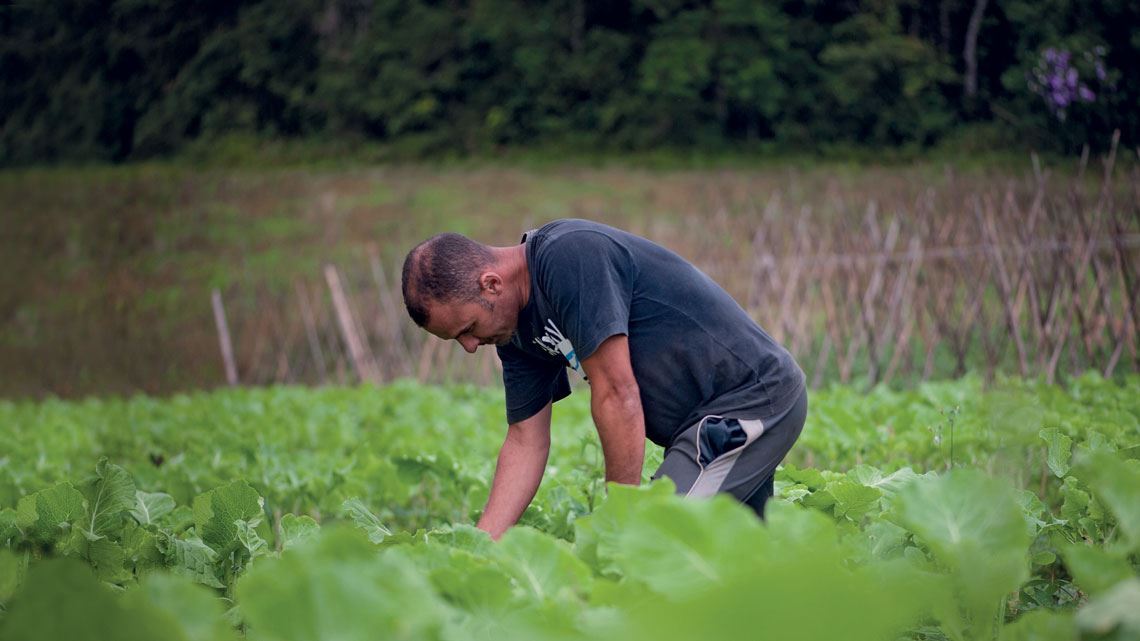Winner of the 2020 Nobel Peace Prize, the United Nations World Food Programme (WFP-UN) estimates that, this year, hunger will plague 270 million people in the 88 countries in which the international organization operates—a 82% increase compared to 2019. In Brazil—one of the largest food producers in the world—in 2017 and 2018 four out of 10 families did not have regular and permanent daily access to enough food. In the same period, over 10 million people reported experiencing hunger: the highest number in the last 15 years, according to the Family Budget Survey (POF), released in September by the Brazilian Institute of Geography and Statistics (IBGE). Food insecurity is an issue that requires multidisciplinary solutions. The mitigation paths pointed out by the researchers interviewed by Pesquisa FAPESP involve income distribution policies and investment in education, as well as incentives for family farming, to increase the availability of food for domestic consumption and reduce hunger in rural areas, where the situation is more serious.
According to IBGE’s Municipal Agricultural Production (PAM) survey, in 2019 the value of agricultural production in the country grew 5.1%, reaching R$361 billion—an increase driven by grains, which totaled R$212.2 billion. Data from the National Supply Company (CONAB) indicate that Brazil is the world’s largest producer of soybeans, having exported 74 million tons of the grain last year—almost double the 43 million tons consumed locally. The country is also among the top exporters of cotton, corn, chicken, and beef. “Despite being one of the largest food producers in the world, about 40% of planted areas is used for growing soybean and cattle, generating commodities that do not help reduce food insecurity in the country,” observes health expert Denise Oliveira, a researcher at the Oswaldo Cruz Foundation (FIOCRUZ), in Brasília, and coordinator of the Brazilian Observatory on Food Habits.
Food security involves regular and permanent access to sufficient quality food. In 2004, food security in Brazil covered 65.1% of the households in the country; in 2013, this number increased to 77.4%. According to data from the most recent IBGE analysis, it has since dropped to 63.3% of households. In addition, the survey pointed out that, in 2017 and 2018, 36.7% of the 68.9 million Brazilian households experienced some degree of food insecurity. Severe food insecurity—when families have nothing to eat and therefore starve—has increased 43.7% from 2013 to 2018, rising from 7.2 million to 10.3 million people.
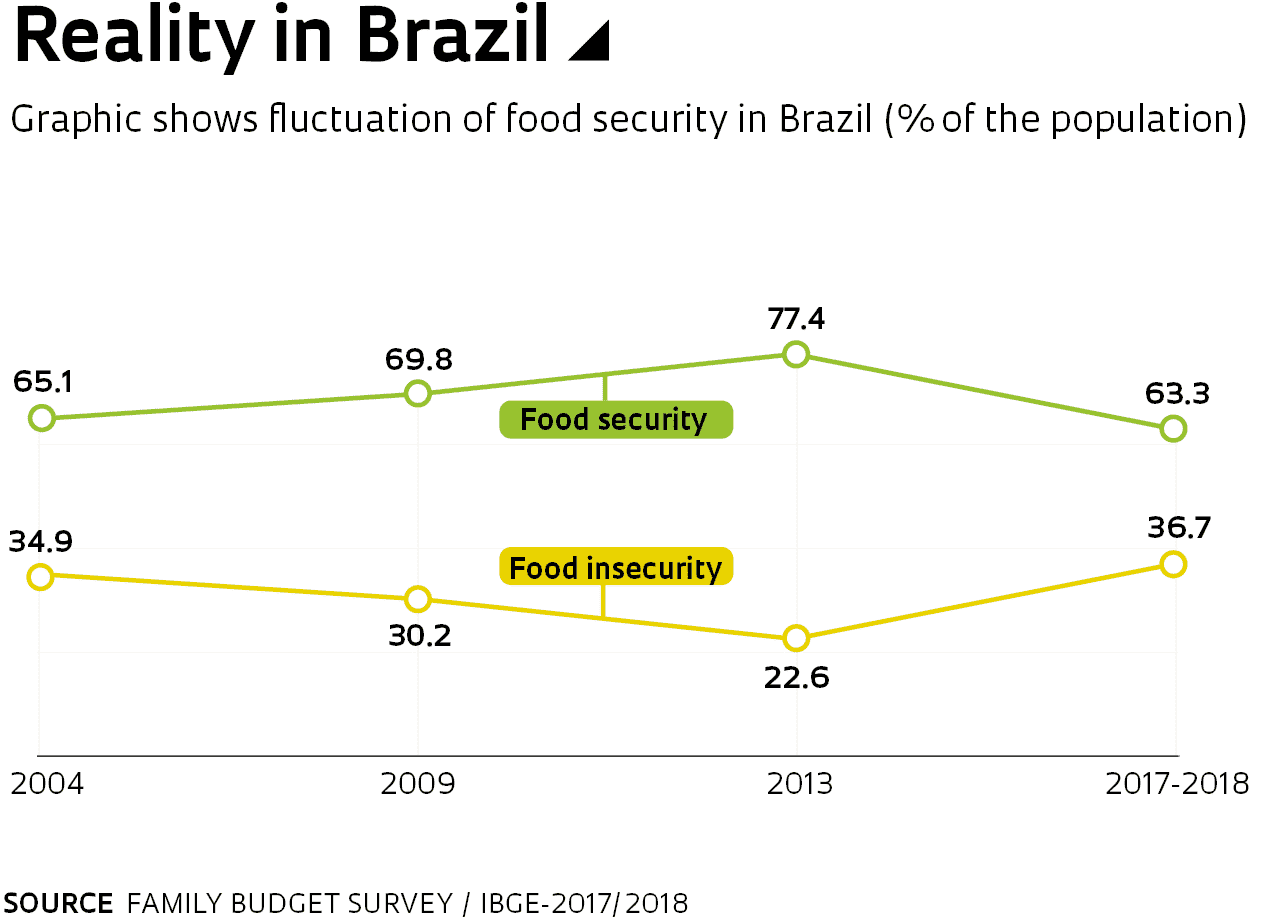
Black and brown women and people are some of the most vulnerable groups. Of the food secure households, 61.4% are headed by men. This prevalence is reversed as food insecurity rises. In 51.9% of severely food insecure households, women are the main providers. The heads of 15.8% of all households with severe food insecurity have declared themselves to be Black, while only 10% of food secure households are headed by a Black person. One of the technical contributors to the POF report on Food Security, nutritionist Rosana Salles-Costa, from the Josué de Castro Nutrition Institute at the Federal University of Rio de Janeiro (UFRJ), explains that food insecurity in households headed by women or Black and mixed-race people is related to income inequality and difficult access to stable working conditions.
In Brazil, food insecurity is mainly due to the extreme poverty experienced by the population. “The number of people in extreme poverty, meaning families that live on less than R$145 per month, is very close to the number of people who experience severe food insecurity,” according to economist Francisco Menezes, a project coordinator at the Brazilian Institute for Social and Economic Analysis (IBASE) and a researcher at the non-governmental organization (NGO) ActionAid. The IBGE National Household Sample Survey (PNAD) indicated that, in 2017 and 2018, 12 million Brazilians were experiencing extreme poverty, while the POF showed that 10 million people were experiencing severe food insecurity for the same period. “Severe food insecurity affects families that cannot afford food. This is why income transfer policies, such as Bolsa Família, are fundamental in the fight against hunger,” maintains Salles-Costa, from UFRJ, who has been coordinating the group that investigates the effects of income transfer policies in the fight against food insecurity.
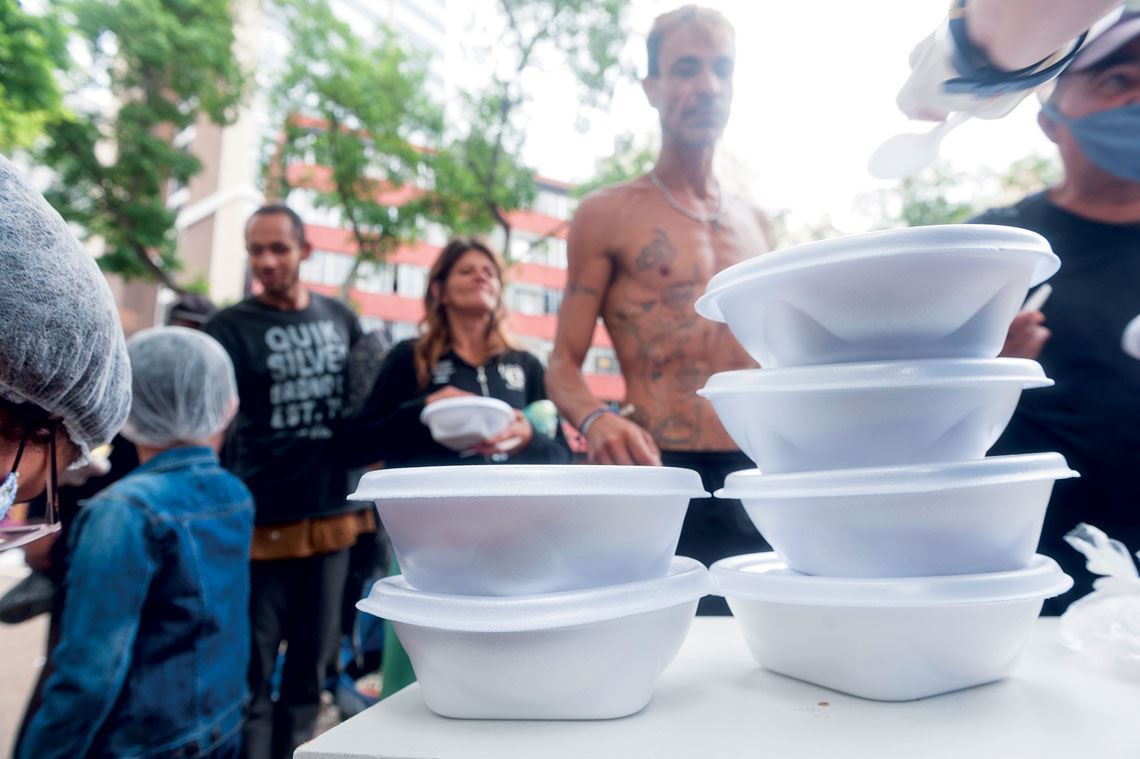
Léo Ramos Chaves
Food distribution in downtown São Paulo seeks to alleviate hunger among the populationLéo Ramos ChavesFor agronomist José Graziano da Silva, director-general of the United Nations Food and Agriculture Organization (FAO) from 2012 to 2019, the reason why food insecurity has been getting worse in Brazil is mainly due to its low economic performance since mid-2008, and the subsequent rise in unemployment and dipping income levels. Another factor, according to Menezes, from IBASE, involves the weakening of public policies on food security, which have had their budget increasingly reduced since 2014. One example is the federal government’s Food Acquisition Program (PAA), which purchases food from family farms and directs it to people experiencing food and nutritional insecurity, the welfare network, public food and nutrition security resources, and the public and philanthropic education network. The program, which has received up to R$2 billion from the federal budget in the past, currently gets R$200 million.
In an essay published on the website of the non-governmental organization Federation of Agencies for Social and Educational Assistance (FASE), anthropologist Maria Emília Pacheco, who was president of the National Council for Food and Nutrition Security (CONSEA) for four years, estimates that, from 2011 to 2016, public purchases through the program benefited around 730,000 farming families, with 2.1 million tons of food bought for 104,000 welfare entities across the country. “In 2019, key institutions for the development and execution of public food security policies were dismantled, including the Ministry of Social Development, which has been incorporated into the Ministry of Citizenship, and even CONSEA itself,” notes Menezes.
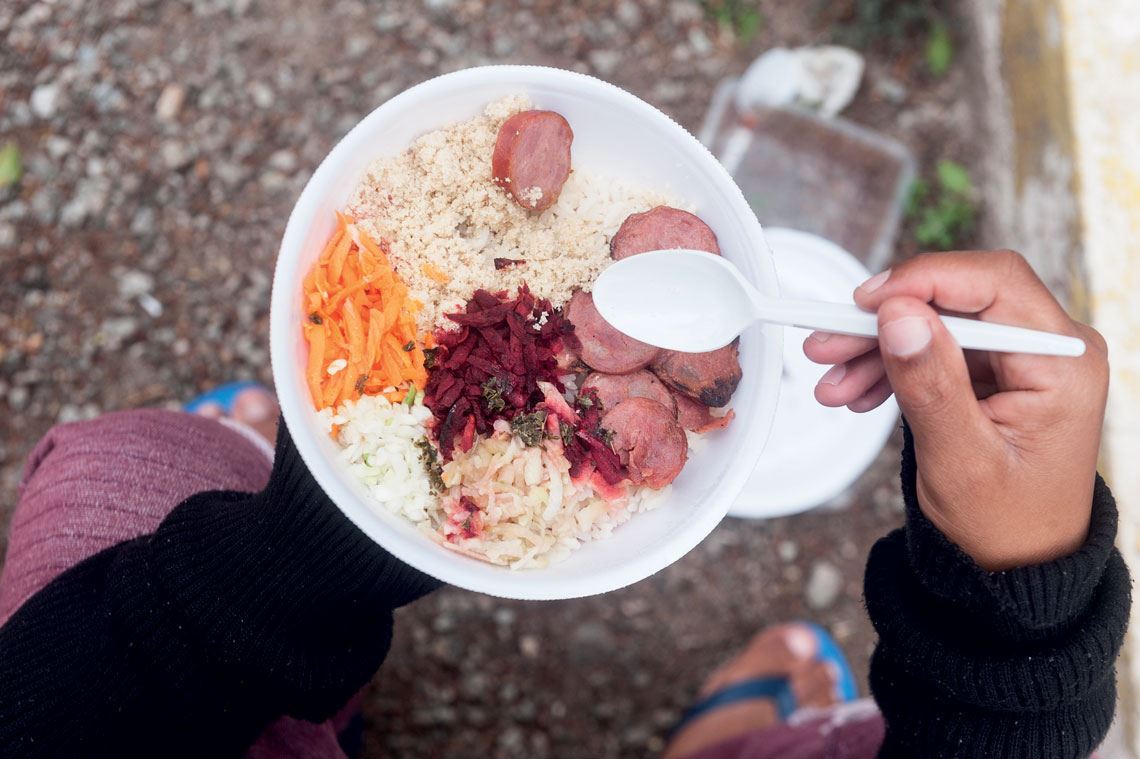 Léo Ramos ChavesIn an apparently paradoxical phenomenon, hunger has affected rural populations more severely than urban ones, as pointed out by the IBGE survey. From 2017 to 2018, severe food insecurity plagued 7.1% of households in rural areas and 4.1% of families living in cities. Political scientist Thiago Lima, from the Department of International Relations at the Federal University of Paraíba (UFPB), believes this is mainly due to the weakening of policies that encourage family farming. He notes that, since the mid-1990s, the country has chosen to become a major exporter of commodities such as soy, corn, rice, meat, and sugar, as a strategy to reverse the low foreign exchange reserve. At the same time, there has been significant growth in East Asia, which has also begun to adopt a more westernized diet, rich in meats, dairy products, and sugars, thus driving the demand for Brazilian agribusiness, which has since been increasingly focused on exports. “This has affected the domestic market, as more and more growers have adapted to the foreign market, investing in monocultures and reducing areas dedicated to local consumption products, such as rice and beans,” he explains.
Léo Ramos ChavesIn an apparently paradoxical phenomenon, hunger has affected rural populations more severely than urban ones, as pointed out by the IBGE survey. From 2017 to 2018, severe food insecurity plagued 7.1% of households in rural areas and 4.1% of families living in cities. Political scientist Thiago Lima, from the Department of International Relations at the Federal University of Paraíba (UFPB), believes this is mainly due to the weakening of policies that encourage family farming. He notes that, since the mid-1990s, the country has chosen to become a major exporter of commodities such as soy, corn, rice, meat, and sugar, as a strategy to reverse the low foreign exchange reserve. At the same time, there has been significant growth in East Asia, which has also begun to adopt a more westernized diet, rich in meats, dairy products, and sugars, thus driving the demand for Brazilian agribusiness, which has since been increasingly focused on exports. “This has affected the domestic market, as more and more growers have adapted to the foreign market, investing in monocultures and reducing areas dedicated to local consumption products, such as rice and beans,” he explains.
According to Lima, during the first decade of the 2000s, the country supported both agribusiness and food production for the internal market. “During this time, economic growth and policies related to student nutrition, buying from family farmers, and building cisterns for semi-arid regions—in addition to the expansion of rural settlements—meant hunger was greatly reduced in the country,” points out the political scientist. He goes on to explain that, after 2016, Brazil started to prioritize the exportation of food, thus reducing local supply.
On the other hand, economist Felippe Serigati, from the São Paulo School of Economics at the Getulio Vargas Foundation (FGV-EESP), highlights the importance of agribusiness in increasing food availability over the last three decades. “From 1960 to 1980, food insecurity in Brazil was due to a restricted supply of food. There was a lack of products and the country had to import basic items,” says Serigati, who coordinates the agribusiness professional master’s degree program at FGV-EESP. According to the economist, technological developments from the 1980s onward allowed for an increase in food production, which helped both reduce food insecurity and strengthen exports. Regarding the recent escalation in food insecurity, Serigati points to dwindling household budgets as one of the main causes.
 Léo Ramos ChavesSerigati also argues that it is not possible to precisely establish the exact division of roles between family farming and agribusiness toward food security for the population, as both are involved. “Smallholders in the state of Santa Catarina, for example, are diverse grain producers and raise chickens and pigs, but they buy corn from large producers to feed their animals,” he adds. He also points out that some small farmers supply both agribusiness and the domestic market—such as the fruit growers in rural São Paulo and in the São Francisco River valley.
Léo Ramos ChavesSerigati also argues that it is not possible to precisely establish the exact division of roles between family farming and agribusiness toward food security for the population, as both are involved. “Smallholders in the state of Santa Catarina, for example, are diverse grain producers and raise chickens and pigs, but they buy corn from large producers to feed their animals,” he adds. He also points out that some small farmers supply both agribusiness and the domestic market—such as the fruit growers in rural São Paulo and in the São Francisco River valley.
Family farmers have up to four fiscal modules—a unit of land, measured in hectares, that varies according to each municipality—employ family labor only, and have their family income linked to the farm. According to data from the latest Agricultural Census, released in 2017, 77% of the more than 5 million agricultural production establishments in the country belong to family farmers, who account for 23% of cultivated areas. Sociologist Fábio Alves, a researcher at the Institute for Applied Economic Research (IPEA), states this group accounts for 70% of cassava production, 48% of banana production, 60% of vegetable production, 64% of milk production, and 51% of pig farming, all considered staple products in the Brazilian diet. Alves also says that family farming employs two thirds of all rural workers, generating 10 million jobs. “In addition to producing the food for the Brazilian table, small farmers also create jobs and supply products for their own consumption,” explains the researcher, who is part of a work group on rural development.
Lessons from the Pandemic
“We are seeing an increase in malnutrition cases among the population we help,” warns pediatrician Maria Paula de Albuquerque, general manager of the Center for Nutritional Education and Recovery at the Federal University of São Paulo (CREN-UNIFESP). CREN helps families that live on less than twice the minimum monthly wage and live in districts of the city of São Paulo that have a very low Human Development Index (HDI): São Matheus, São Miguel Paulista, Tiradentes, Lajeado, Jardim Ângela and Brasilândia. Albuquerque notes that, among the population in these areas, the tendency is for all forms of malnutrition to get worse. “In 2019, 80% of the children we helped were facing obesity problems. Now, they are also developing other forms of malnutrition, including short stature and emaciation,” she shares. Albuquerque notes the disorders could be related to the consumption of certain industrialized or ultra-processed products, which are sometimes cheaper than fresh and healthy food.
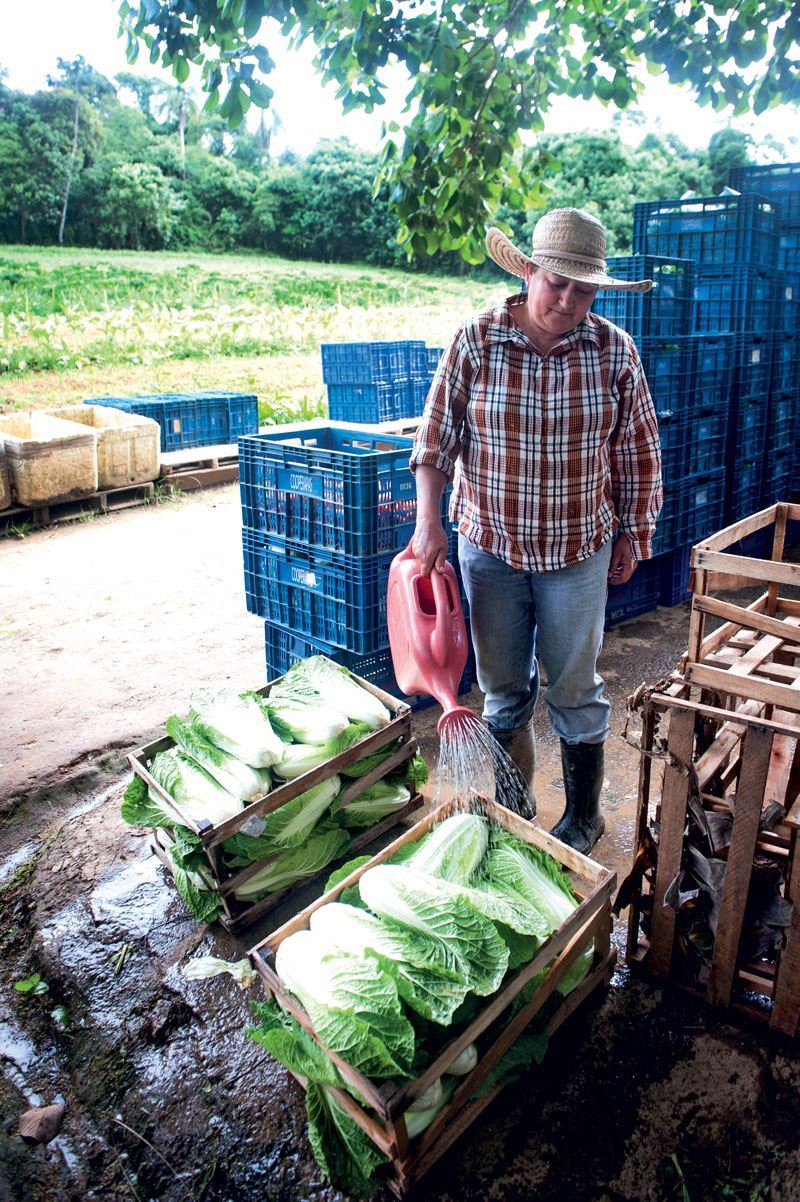
Léo Ramos Chaves
Farmers prepare food baskets to sell to vulnerable populations at reduced pricesLéo Ramos ChavesPharmacist and biochemist Bernadette Dora Gombossy de Melo Franco, from the Department of Food and Nutrition at the University of São Paulo School of Pharmaceutical Sciences (FCF-USP) and coordinator of the Food Research Center (FORC), one of the Research, Innovation, and Dissemination Centers (RIDC) supported by FAPESP, highlights that certain industrialized foods can aggravate the issue of malnutrition and should be avoided. “On the other hand, processed foods can be important in the fight against hunger and food insecurity—as long as the processing ensures they are healthy, functional, and safe,” she observes.
According to FAO data, as pointed out by Graziano, healthy eating in Brazil can cost four times more than basic food, that is, somewhere around R$12 per meal, which is inaccessible for a large part of the population. To be considered healthy, a diet must prioritize unsaturated fats while excluding industrially produced trans fats; include less than 10% of its daily calories from added sugars; ensure daily eating of at least 400 grams of fruits and vegetables and less than 5 grams of salt; and include a small amount of animal products.
“It may seem like a paradox that people who lack food can be obese, but this is related to the low quality of consumed food,” highlights nutritionist Semíramis Martins Álvares Domene, from the UNIFESP Institute of Health and Society, Baixada Santista campus. She mentions a study, carried out from 2015 to 2017 by UNIFESP researchers, on the consumption of ultra-processed foods and its association with food dependence in low-income, overweight children. The study included 139 individuals between the ages of 8 and 10 enrolled in two Unified Educational Centers (CEU), in the city of São Paulo. According to a 2019 article published in the journal Appetite, which presented part of the research results, the main finding among overweight children was an association between the frequent consumption of cookies, soft drinks, and hot dogs and food addiction, found in 29% of the overweight children. “The study found that these children ate these foods in excess, which was a behavior similar to that observed in drug addicts,” shares the researcher. Domene believes identifying foods that may cause addiction is important for correctly treating and preventing childhood obesity, one of the most significant public health problems in the world.
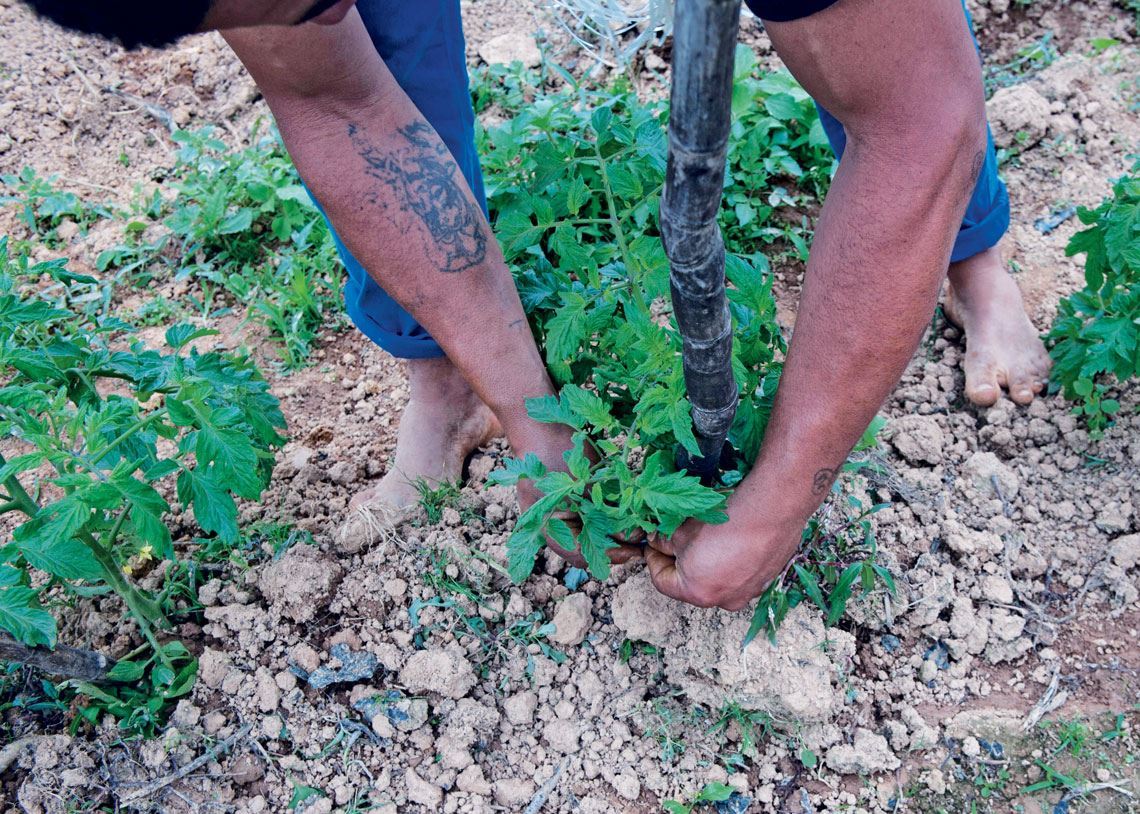
Léo Ramos Chaves
Farm worker in Parelheiros, in the city of São PauloLéo Ramos ChavesRegarding government initiatives to improve food and nutritional security for Brazilian children, Albuquerque highlights the National Student Nutrition Program (PNAE), which ensures additional resources are provided to states and municipalities for school meals and educational efforts. “With the initiative, many children had 70% of their nutritional needs met at school,” she explains. Albuquerque shares that the first five years of a child’s life are critical for establishing their eating habits. Experiencing food insecurity frequently during childhood can cause irreversible damage to the child’s physical and cognitive development.
Because of this, CREN makes periodic visits to families in the districts in which it operates. “During the pandemic, we made these visits to understand how they were using their emergency aid monies,” she says. The pediatrician reports that families that have followed the directions they were given regarding fresh and healthy products are reporting a positive impact on the weight and height of their children and reduced levels of food insecurity. A consensus on the importance of consuming fresh produce does not reduce the role of the food industry. Scientific and technological developments of the industry have allowed for large-scale production and distribution of products consumed in abundance worldwide, such as coffee, cocoa, barley, soybeans, and wheat.

Léo Ramos Chaves
Food engineering professionals seek technologies to help avoid food wasteLéo Ramos ChavesConcerns about food security issues have led to changes in the curricula of food engineering programs. For example, the University of Campinas (UNICAMP) has reformulated its undergraduate curriculum to include discussions on sustainability and the social implications of food production and development. After two years in development, the new curriculum was fully introduced in 2020. “A growing concern both in food engineering programs and in the food industry itself has been investigating technologies that can reduce food waste by increasing the durability of food products without damaging the environment or adding chemical preservatives to products,” explains food scientist Anderson de Souza Sant’Ana, from the UNICAMP School of Food Engineering. Sant’Ana states that, in developing countries like Brazil, 30% of all food produced can go to waste, from harvest to surpluses at farmers markets, supermarkets, restaurants, and homes.
Projects
1. FoRC – Food Research Center (No. 2013/07914-8); Grant Mechanism Research Grant – Research, Innovation, and Dissemination Centers (RIDCs); Principal Investigator Bernadette Dora Gombossy de Melo Franco (USP); Investment R$39,436,780.80.
2. Study of the effectiveness of multidisciplinary intervention in overweight adolescents at the Nutritional Education and Recovery Center (CREN): I learned, I taught (No. 14/22351–2); Grant Mechanism Regular Research Grant; Principal Investigator Ana Lydia Sawaya (UNIFESP); Investment R$205,171.66.
Scientific article
FILGUEIRAS, A.R. et al. Exploring the consumption of ultra-processed foods and its association with food addiction in overweight children. Appetite. no. 135, pp. 137–45. Apr. 2019.
Book
LIMA, T. (org). Segurança Alimentar e Relações Internacionais. Published by the Federal University of Paraíba (UFPB): João Pessoa, 2019.
Documents
Family Budget Survey (POF) 2017–2018 – Analysis of Food Security in Brazil. Brazilian Institute of Geography and Statistics, Rio de Janeiro: 2020.
Municipal Agricultural Production (PAM), Brazilian Institute of Geography and Statistics, Rio de Janeiro: 2020.
National Health Survey, Brazilian Institute of Geography and Statistics, Rio de Janeiro: 2020.
Agricultural Census, Brazilian Institute of Geography and Statistics, Rio de Janeiro: 2017.
PACHECO, M. E. L. Vetoes to PL 735 deny citizenship and the right to food. Federation of Social Assistance and Educational Bodies. Online. Aug. 2020.


